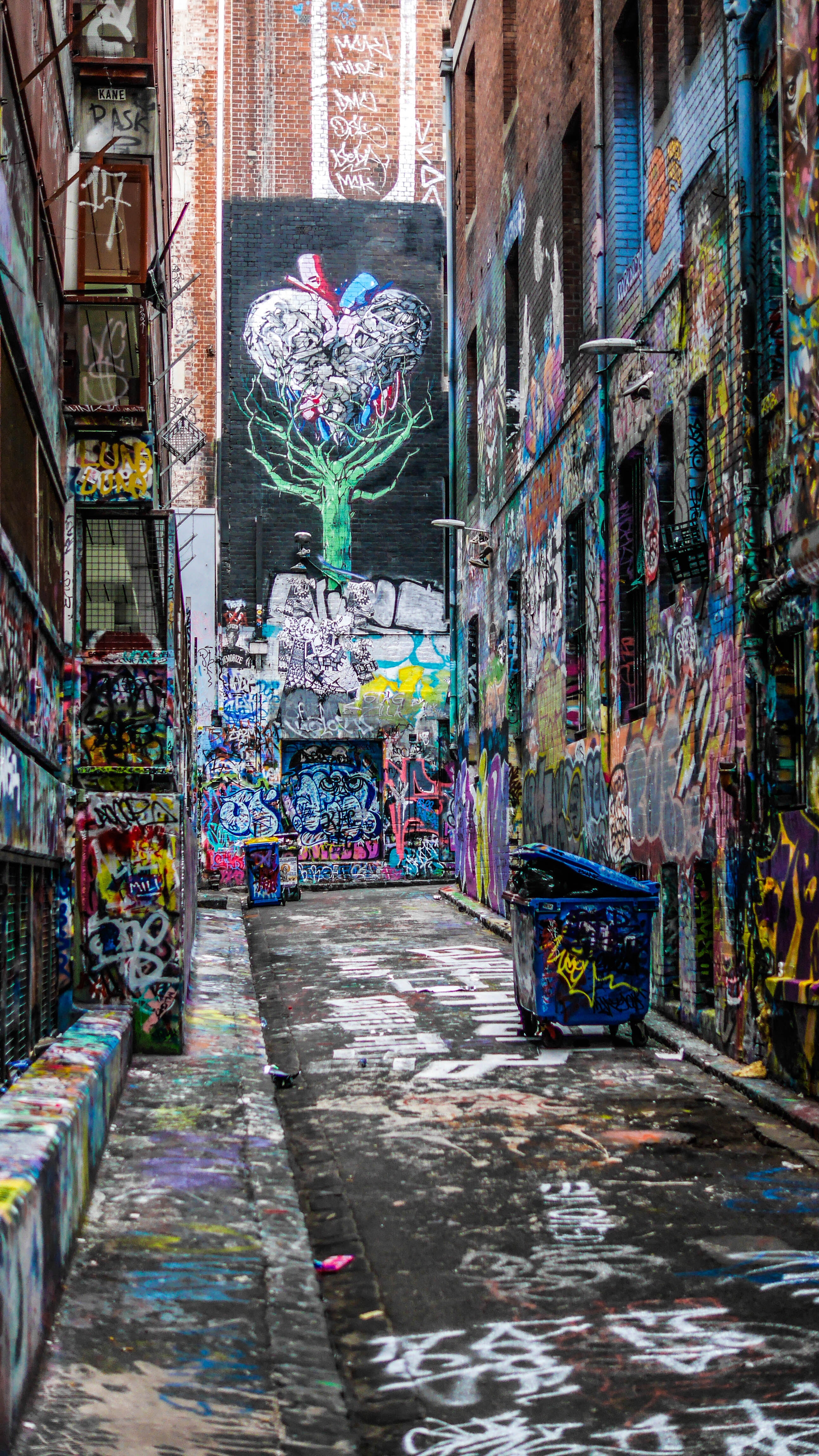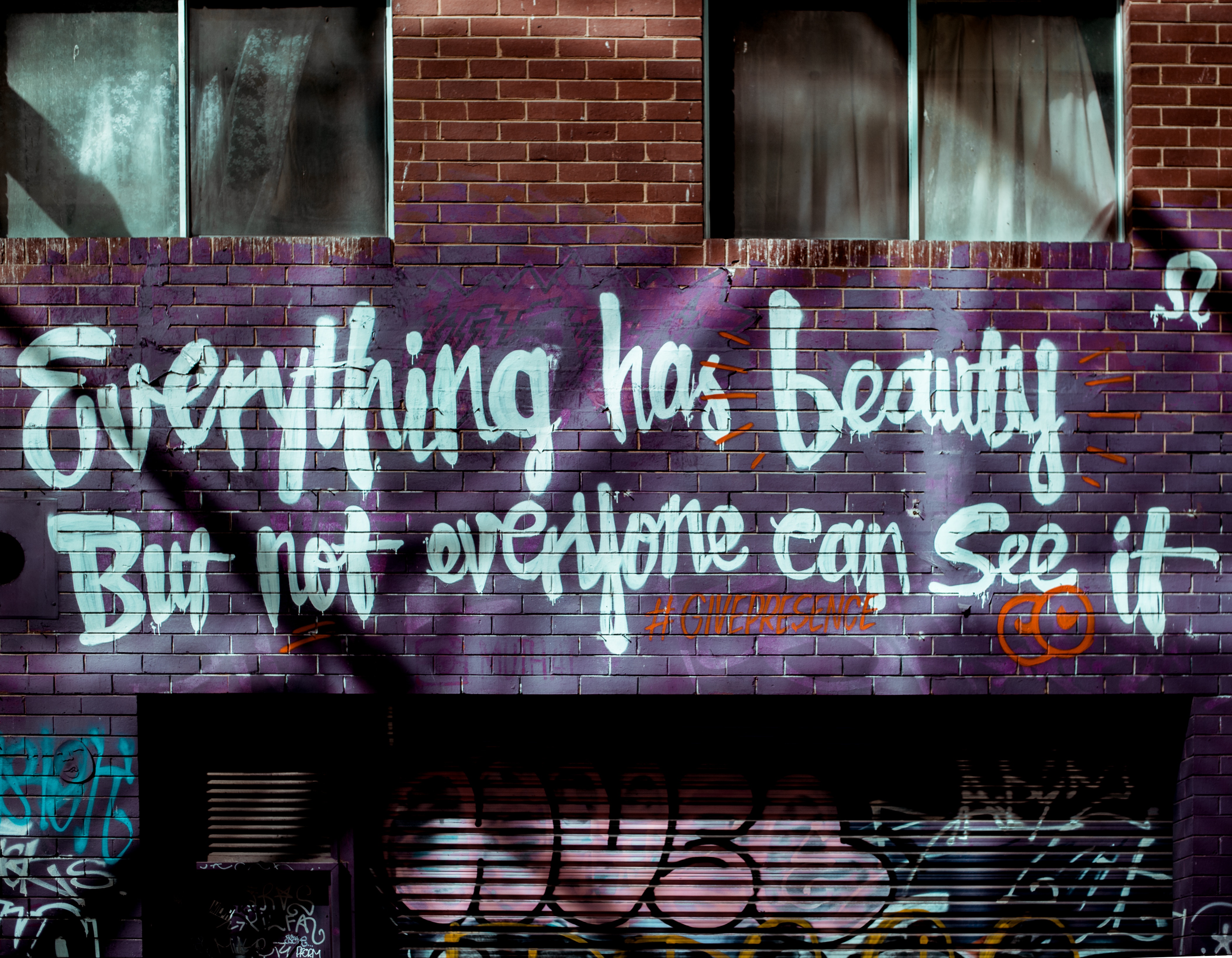Graffiti is an art form that is illegal in most places, yet it persists and is still found all over cities and tunnels. Despite the risks, individuals still choose to partake in this vandalism. What makes graffiti so appealing?
Graffiti originally developed as a way for people who struggled with literacy to express their frustration with reading and writing. The shape that graffiti has taken – bloated letters, destructive appearance – is a way of portraying the inner desires that these individuals wanted to do to words: annihilate them. The feelings of powerlessness encompassed these individuals, leading them to attempt to gain power back by using this technique.

Graffiti is an art form that is illegal in most places, yet it persists and is still found all over cities and tunnels.
Mark-making is something that humans are innately built with the yearning to do. It is a primitive desire that is initiated in infancy, never waning because it combines motion, curiosity, and motor control into a symbolic validation of existence. Mark-making is as simple as smearing food on a plate, something infants often do during their feeding time. In prehistoric times, cavemen used their limited resources to carve and paint the walls of their caves. Creation is an instinct that cannot be suppressed. Creation is more than just art, though art is the first form that typically comes to mind when hearing the word “create.” There is so much more in the world that gets created, for example, cooking. Cooking a meal or baking a cake is another wonderful (and delicious!) way to create. Everyone has their own method of creation, whether it be a chef, a writer, or even a scientist, all humans have the innate desire to create.
Graffiti specifically emits a vitality that generates a desire to cultivate art in public places. It is as if by adding words to buildings and subway cars, these objects are given a life of their own, sharing the words that the artists wants them to share. Art therapist Edith Kramer once said, “graffiti [is]…rooted in the persistent need to create form, even while the inclination to decorate is perverted into the impulse to deface.” Graffiti artists are drawn to this vandalism because the exhilaration of creating and expressing themselves. They utilize places where their words will be seen and sharing the messages that they want shared. The defiance of the law is an additional bonus that each artist takes with pleasure. This act of rebellion adds to the often rebellious messages they are drawing.
While defiance can be thrilling, there are consequences that these artists risk-taking on because of their impulse to graffiti. Graffiti is illegal in most places, granted, there are a few cities that have areas where graffiti is encouraged. In Brooklyn, New York, there is a whole development of buildings known as the Bushwick Collective that are allowed to be graffitied on. In Venice Beach, California, there is an area known as the Venice Art Walls, where graffiti artists are also encouraged to display their art. Aside from these places, someone caught graffiting will get arrested and depending on the state, there could be a variety of consequences. Even so, graffiti artists do not stop.

Graffiti was first to develop and is word based, opposed to street art being image based.
Street art is both very similar and very different from graffiti. Graffiti was first to develop and is word based, opposed to street art being image based. Street art is typically done with permission from the location it is being created on, compared to graffiti being done illegally, embracing rebellion. However, both are getting noticed more and more. Look at Banksy, whose painting, which was originally a design painted onto walls of buildings in Bristol, just sold for $1.1 million. In New York City, there is even an organization that does street tours of graffiti and street art alike. Appreciation for this type of art is increasing and some areas are allowing their buildings to be painted on, turning this vandalism into a legitimate form of art.




